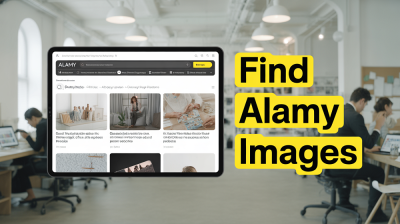Editorial stock photography has rapidly gained prominence in the realm of visual content creation. But what exactly does it mean? Simply put, it refers to images primarily produced for magazines, newspapers, and online publications, capturing current events, social issues, and everyday life. Unlike traditional stock photography that focuses more on commercial aesthetics, editorial stock images tell real stories and contextually depict the nuances of human experience.
In today's fast-paced digital world, editorial stock photography plays a crucial role in how we consume news and information. It provides a rich tapestry of visuals that not only complement textual content but also engage audiences on a deeper level. Whether you're a journalist, marketer, or content creator, understanding the significance of these images can elevate your storytelling game.
The Evolution of Visual Storytelling

Visual storytelling has come a long way since the days of paintings on cave walls. With the advent of photography in the 19th century, followed by the rise of mass media in the 20th century, the way we communicate through visuals has transformed dramatically. Today, we find ourselves in a digital age where images hold more weight than ever before.
Here’s a concise timeline showcasing the evolution of visual storytelling:
| Era | Description |
|---|---|
| Prehistoric | Cave paintings that depicted hunting scenes and daily life. |
| 19th Century | The invention of photography expands opportunities for storytelling. |
| 20th Century | Photojournalism emerges; magazines use powerful images to tell news stories. |
| 21st Century | Digital platforms proliferate; editorial stock photography becomes widely accessible. |
Today, platforms like social media have democratized visual content, allowing more voices to be heard and represented. *Editorial stock photography* not only caters to this growing need but also redefines how we engage with stories. By capturing authentic moments, these images connect with audiences on an emotional level, bridging the gap between the storyteller and the viewer. In a world inundated with content, the ability to convey compelling narratives through visuals has never been more critical. True storytelling isn't just about words; it's about creating an experience, and editorial stock photography is at the forefront of that experience.
Also Read This: How to Edit Text in JPEG Images Online
Key Features of Editorial Stock Photography

Editorial stock photography has become an essential tool for content creators, journalists, and brands looking to tell compelling stories. But what exactly sets it apart from other types of stock photography? Let’s break down some of its key features.
- Contextual Relevance: Editorial photos capture specific events, locations, or cultural moments, providing context that enhances a narrative. For instance, a picture of a protest conveys more than just faces; it encapsulates the emotions and urgency of the situation.
- Authenticity: Unlike staged stock images, editorial stock photos offer a slice of real life. These images’re often candid and unedited, making them more relatable and trustworthy for viewers.
- Licensing Restrictions: Editorial images are primarily licensed for non-commercial use, meaning they can’t be used for advertisements. This specificity adds a layer of exclusivity, pushing creators to utilize these images in informative, storytelling contexts.
- Diverse Perspectives: The world of editorial stock photography is vast. It encompasses a range of subjects—politics, social issues, sports, and culture—enabling creators to find images that best represent their particular narratives.
- Timeliness: Many editorial photos are captured in real-time, ensuring they reflect the latest news and trends. This feature helps brands and media outlets stay current and relevant.
So, whether you’re a blogger, a journalist, or a brand marketer, editorial stock photography offers a treasure trove of authentic imagery to enhance your visual storytelling.
Also Read This: how to insert image in body of email
Impact on Journalism and Media

The advent of editorial stock photography has significantly transformed the landscape of journalism and media. It’s not only about having images to accompany stories; it's about how those images reshape narratives, communicate information, and engage audiences.
| Impact Area | Description |
|---|---|
| Increased Accessibility: | Editorial stock photos provide journalists with access to imagery they might not otherwise be able to capture, whether due to budget constraints or geographical limitations. |
| Enhancing Storytelling: | Images can evoke emotions and provide visual context that complements written narratives. This synergy helps in capturing the audience's attention and making stories more engaging. |
| Global Perspectives: | Editorial stock photography opens up diverse cultural and global viewpoints, enabling journalists to cover stories beyond their immediate environments. |
| Change in Standards: | The abundance of high-quality editorial images sets a new expectation for visual storytelling, pushing media outlets to adopt more polished and professional imagery. |
Moreover, with social media's ceaseless demand for fresh content, editorial stock photography has become crucial. It allows media organizations to quickly source the visuals they need, keeping them responsive to unfolding news stories. Thus, the role of editorial stock photography in journalism is not just beneficial; it’s pivotal in driving how stories are told in today's fast-paced media environment.
Also Read This: How to Remove Experience from Your LinkedIn Profile
Benefits of Using Editorial Stock Photography
Editorial stock photography has transformed the way we tell stories visually. Here’s a look at some of the standout benefits of incorporating editorial stock images into your visual storytelling arsenal:
- Access to Authenticity: Editorial stock photography is all about real moments and true stories. You get to use images that capture genuine emotions and events, making your content more relatable.
- Diverse Range of Images: With editorial stock photography, you can find an extensive selection of images covering various subjects, cultures, and events. This diversity helps to broaden your storytelling horizons.
- Time-Saving: Instead of embarking on a lengthy photo shoot, you can quickly find high-quality images that suit your narrative. This saves precious time and allows you to focus on other creative elements.
- Cost-Effectiveness: Purchasing editorial stock images is often more affordable than hiring a professional photographer for a custom shoot. You get professional-quality images at a fraction of the cost.
- Simple Licensing: Most stock photography platforms offer clear licensing options, making it easier to navigate usage rights. You won’t have to deal with complex legal jargon—just choose your images and get to work!
In summary, the benefits of using editorial stock photography are numerous and impactful. By leveraging these images, you can enhance your storytelling and connect with your audience in a powerful way.
Also Read This: Boost Engagement with 123RF Stock Photos
Challenges and Limitations
While editorial stock photography offers many advantages, it's not without its challenges and limitations. Here’s a rundown of some common hurdles you might encounter:
- Generic Feel: Sometimes, stock images can come off as clichéd or overly staged. This can lead to a disconnect with audiences who crave authenticity and uniqueness in storytelling.
- Limited Availability: Not every image you might want or need will be available in the stock libraries. This limitation can hinder your storytelling if you are searching for something specific.
- Licensing Restrictions: While licensing can be straightforward, it's crucial to pay attention. Some images have restrictions on commercial use or need proper crediting—fail to adhere to these rules, and you could face legal issues.
- Quality Control: Not all stock photography is created equal. You might stumble upon low-quality images that don’t meet your standards, which can be frustrating when you're aiming for excellence.
- Overuse and Saturation: Popular stock images can appear in multiple publications, leading to a sense of sameness. If everyone is using the same images, your storytelling may lack the distinctiveness needed to stand out.
Despite these challenges, many storytellers successfully navigate the world of editorial stock photography. By understanding its limitations and strategically choosing images, you can still create compelling visual narratives that resonate with your audience.
Also Read This: A Comprehensive Guide to Adding Projects on Your LinkedIn Profile
7. Future Trends in Visual Storytelling
As we look ahead, it’s exciting to consider how visual storytelling is evolving. Editorial stock photography is at the forefront of these changes, shaping the way stories are told and consumed. Here are some key trends to watch:
- Diversity and Inclusivity: There’s a growing demand for images that reflect diverse cultures, lifestyles, and backgrounds. Stock photo agencies are making strides to include racial, ethnic, and body diversity in their collections, allowing for a more inclusive narrative.
- Authenticity Over Perfection: Viewers are drawn to visuals that feel real and relatable. Editorial stock photography is shifting from overly staged and polished images to more natural, candid shots that resonate with audiences.
- Video and Motion Graphics: The rise of platforms like TikTok and Instagram Reels indicates that motion is becoming a crucial part of storytelling. Editorial stock services are beginning to offer more video content, allowing for dynamic storytelling.
- AR and VR Experiences: Augmented reality (AR) and virtual reality (VR) are transforming how stories are told. Editorial stock images will likely adapt to cater to these immersive technologies, offering a whole new dimension to visual storytelling.
- AI and Customization: Artificial intelligence is streamlining the creation of tailored content. Expect stock photography to embrace AI-driven tools that help users find or even generate images based on specific themes or emotional tones.
8. Conclusion
In a world where attention spans are shorter and competition for engagement is fiercer, editorial stock photography is redefining the parameters of visual storytelling. By providing authentic, relatable, and diverse imagery, it enhances narratives and allows storytellers to connect on a deeper level with their audiences.
As we move forward, embracing these trends means being open to new ways of expression. Whether it’s through integrating AI for tailored content, leveraging the power of video, or fostering inclusivity, the possibilities are boundless.
Essentially, editorial stock photography isn’t just about images anymore; it’s about crafting experiences and interactions that engage, inform, and inspire. So, as you craft your visual narratives, remember that the future is bright, and the tools are more accessible than ever. Let’s harness these innovations to tell meaningful stories that reflect the world around us.
 admin
admin








